No matter which channel customers turn to, there’s an increasing demand for hyper-personalized experiences — especially in financial services.
Generative AI technology like ChatGPT is an example of this, as it only took five days for the application to hit 1 million users. This indicates an increasing expectation for readily available answers that are easy to retrieve and are tailored to a customer’s unique circumstances.
And while the application of generative AI may be limited in the financial sphere for the foreseeable future, there’s existing tech on the market that can help achieve the unified, omnichannel customer service experience your customers want.
Great customer support requires a delicate balance of good self-service that reduces agent workloads. After all, contact center agents are often overwhelmed with contacts, resulting in burned out agents who eventually quit. But if customers can’t find the information they need, up to 43% may abandon your brand.
So how do you optimize a customer support experience to meet the needs of both? Here are five tips to create a truly supportive customer service experience for everyone.
Tip 1: Prioritize a Unified Search Experience
McKinsey reports that 71% of consumers expect personalization (and 76% of consumers become frustrated when they don’t get it). The biggest challenge of personalization is that it looks different for every customer — an answer Jerry needs may not be in the same place as the one Salma is looking for. But you don’t want to send them hunting through multiple repositories.
To save customers from digging through different content repositories (which is the antithesis of a personalized experience), utilize a unified index. Your content remains where it lives, in its source repository.
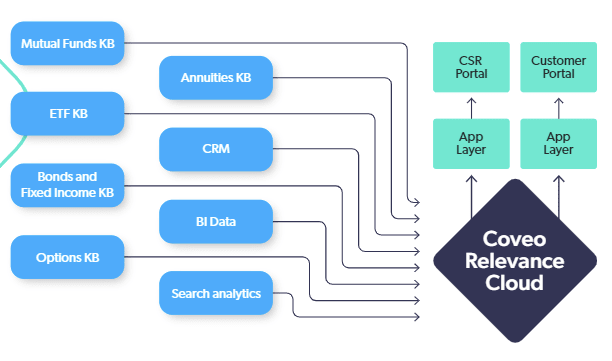
A unified index ingests information about that content — whether structured or unstructured — and then makes that content available where you want it to be. The right search engine leverages an index that prioritizes security and access rights, so content is only shown to those who should be able to see it.
Yet it’s not enough to just make all of that content accessible in one place. Maybe your customers aren’t entirely certain of what they’re looking for — or aren’t sure what to do next. This is why your search should be intelligent and surface the most contextually relevant content for the customer currently searching.
Tip 2: Improve Your Support Content Relevance
You can have all the bells and whistles in the world as part of your customer service experience, but if customers don’t find your content to be helpful, they’re only going to be more frustrated.
What content looks like (we actually perceive things that are visually appealing as more credible) and how easy it is to consume are important considerations. Customers want as much information as they can get in as little time as possible. Thus, it’s important to show value quickly, typically in the form of carefully written titles and excerpts that explain why a piece of content is of use.
This includes not just within the document itself, but, more importantly, in search result pages. Machine learning (ML) models like Automatic Relevance Tuning (ART) surface the most relevant pieces of information related to that query and that customer in real time.Tapping a search feature like smart snippets brings information directly to the searcher, saving time and effort.
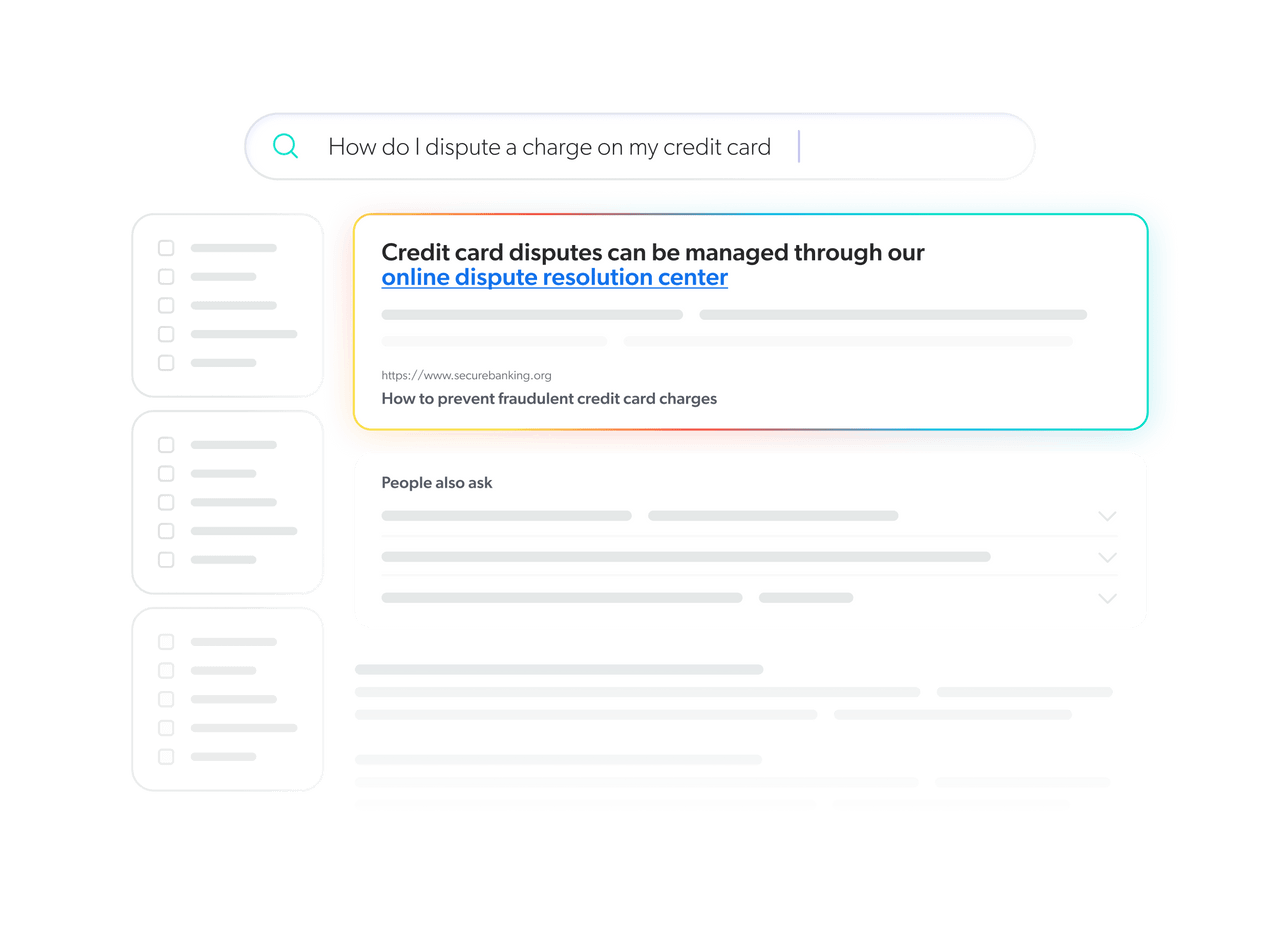
And if you’re wondering how to tell if your customers find your content useful, you can establish metrics and review consumption patterns with search analytics. This helps you reveal content gaps, identify what’s working, and what’s not.
Sometimes one answer might cause a ripple effect, raising another question. Proactively resolve this by offering more information through recommendations and ‘People also ask’ sections, like the one shown below.
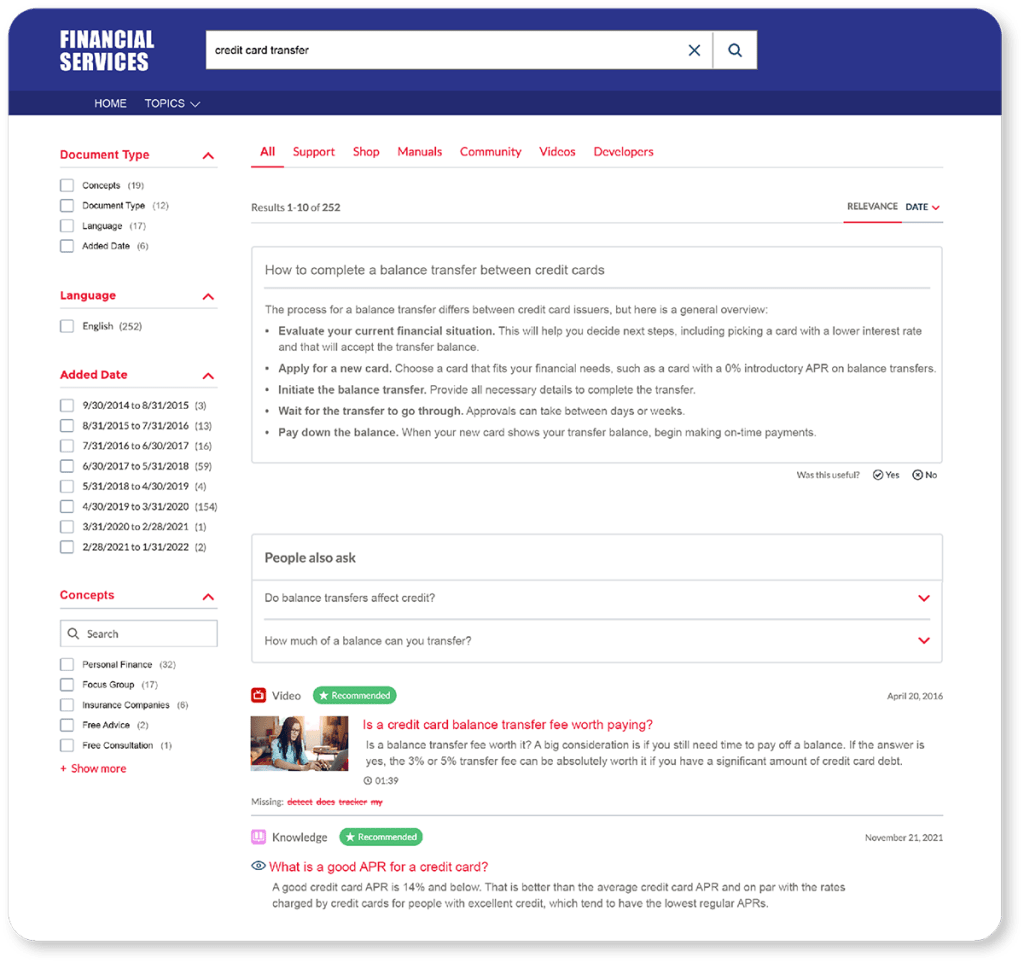
Tip 3: Offer Recommended Resources in Your Digital Banking Portal
Did you know that about 25% of Americans say they don’t have anyone they can ask for trusted financial guidance?
This doesn’t mean trying to get your customers on the phone every time they have a question. You can offer proactive guidance via a self-service portal — in fact, customer centricity expert Steven Van Belleghem found through a global market study that up to 70% of customers expect corporate websites to have one. And Harvard Business Review reports that 81% of survey respondents said they attempt to resolve issues themselves before reaching out to live representatives.
With a recommendation engine, your portal doesn’t just offer what a customer is looking for in the present moment, but also suggestions for what they might need next related to their current action. Or, when combined with profile information, give recommendations related to stage of life, interests, and more.
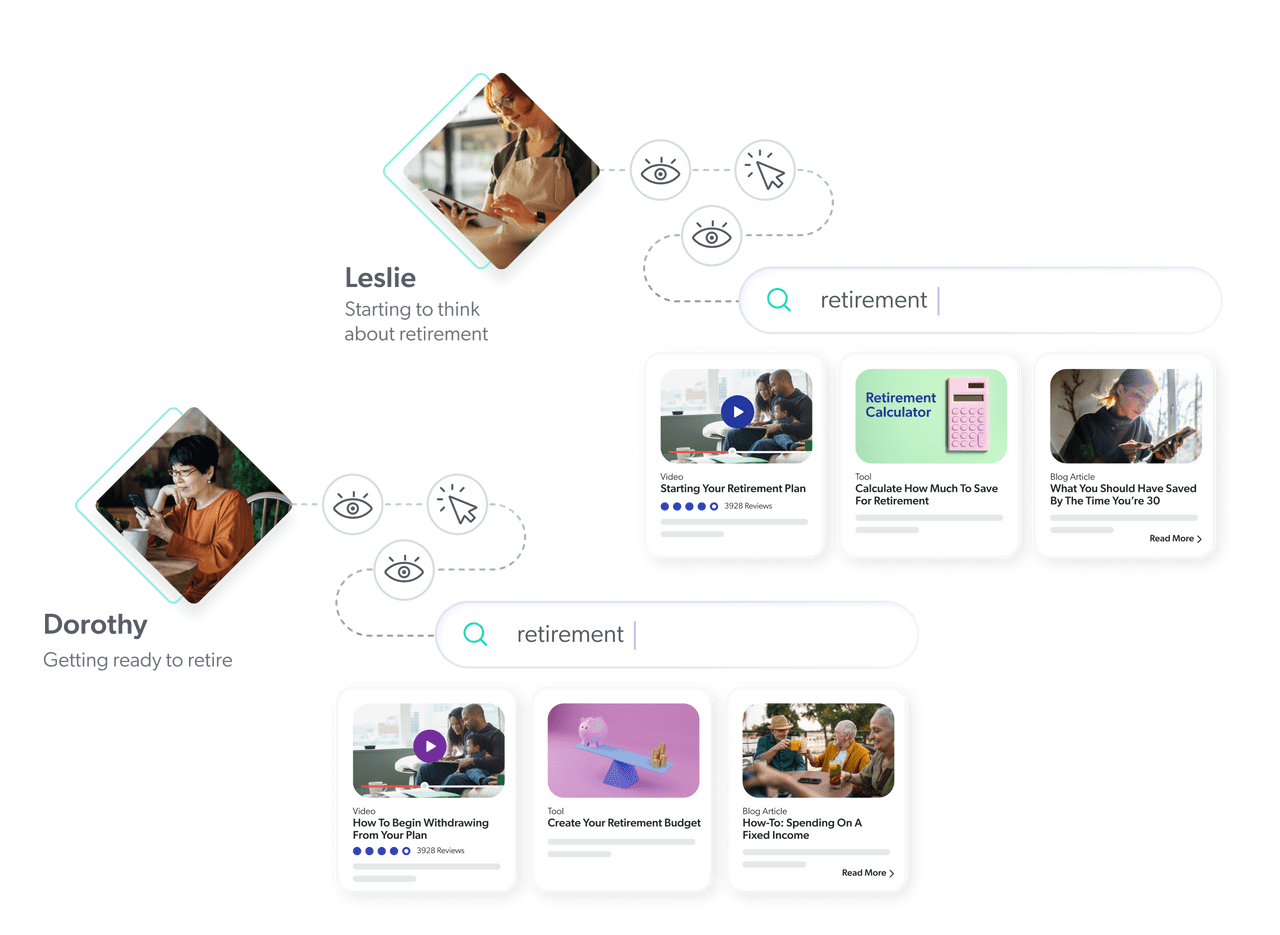
But customers prefer all kinds of channels, your digital banking portal being one of them. Some might prefer the traditional chatbot — but especially in the wake of ChatGPT, our machine friends have been found wanting. That’s why you need to…
Tip 4: Inject Intelligence Into Chatbot Experiences
Chatbots can be a great way to proactively offer service for simple and known issues. Whether resetting a password, performing simple banking transactions, or updating account information, chatbots can relieve your contact center of tedious issues that customers would likely want to resolve themselves, anyway.
The issue, however, is when customers go off script in talking to a chatbot. So many of them function solely by if-this-then-that rules (which is what makes large language models (LLMs) like ChatGPT so exciting!). What’s missing from so many chatbot experiences is contextual relevance (still a big problem for LLMs trained on vast amounts of data like Wikipedia…).
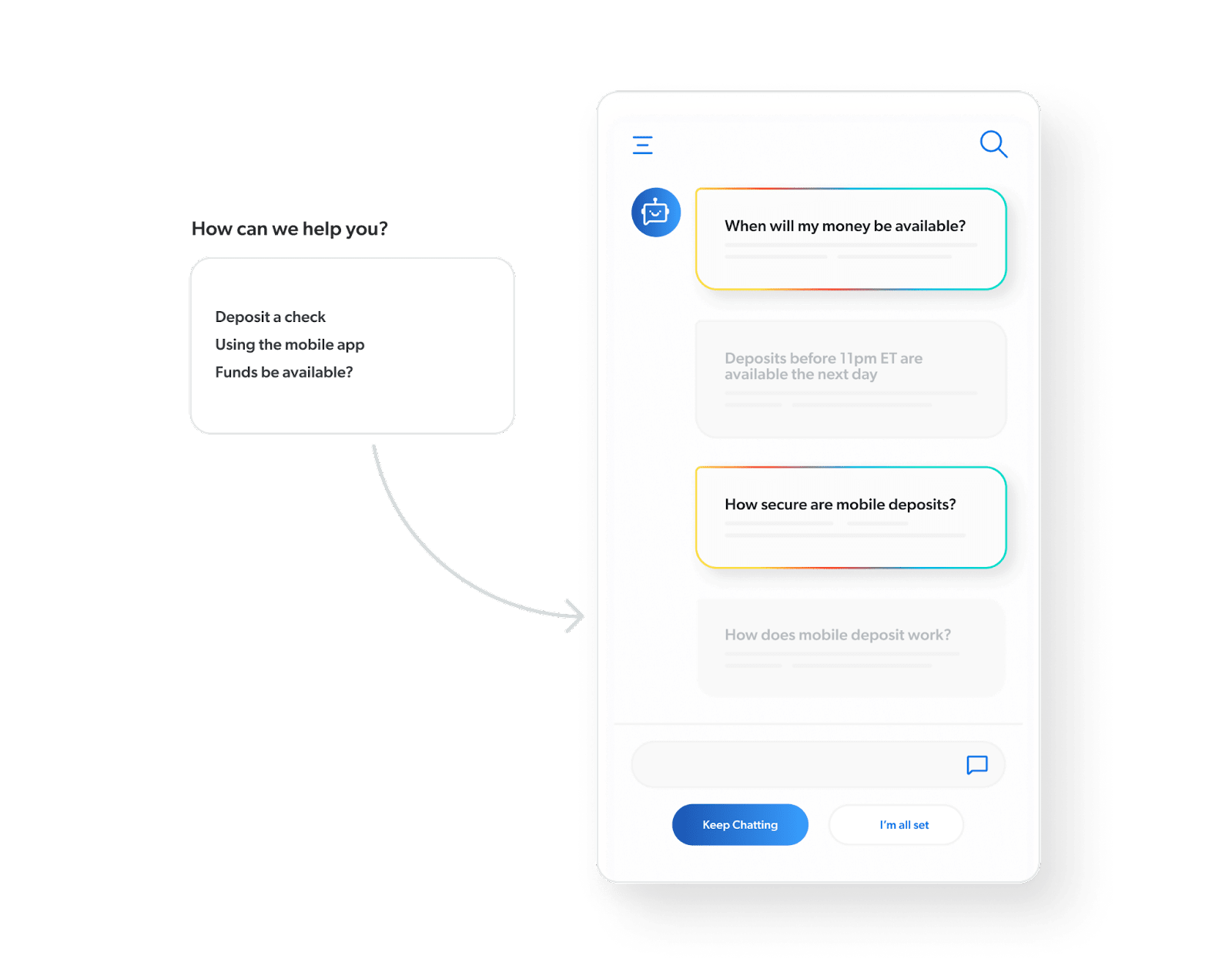
With ML like natural language search connected to a relevance layer, your chatbot can interpret your customer’s language and surface information related to the question at hand — information that likely already exists in a knowledge article, meaning you don’t have to reinvent the wheel with generative AI. You just need to find that information and bring it to your customer, which models like Coveo’s ART can do for you.
With access to a unified, secure index, chatbot can bring in content from the entire ecosystem. This can include both sources within your enterprise repositories, as well as outside sources, such as YouTube videos, blog posts, and even community content. Simultaneously, the algorithm looks at other available customer data such as previous activity, preferences, etc. – to further pinpoint the most relevant content for a given query.
Yet even with intelligent chatbots and unified content, customers should be able to reach your support representatives.
Tip 5: Don’t Pursue Containment as the Only Goal
While some issues are best started in self-service, there are many that will require nuanced advice and decision-making. This means talking to a customer support representative, or CSR.
But this experience shouldn’t make the customer start over when it comes to the journey they’re on. Your CSRs should be aware of what your customer has done already — what they’ve searched for, content they’ve clicked on, and so on.
Set your CSRs up for success by showing them the actions taken during the most recent authenticated self-service session. But don’t overcomplicate this. Showing the searches performed, the articles or processes clicked, and what the customer read will go a long way to allowing the rep to acknowledge prior actions (the best action they can take to handle customer baggage).
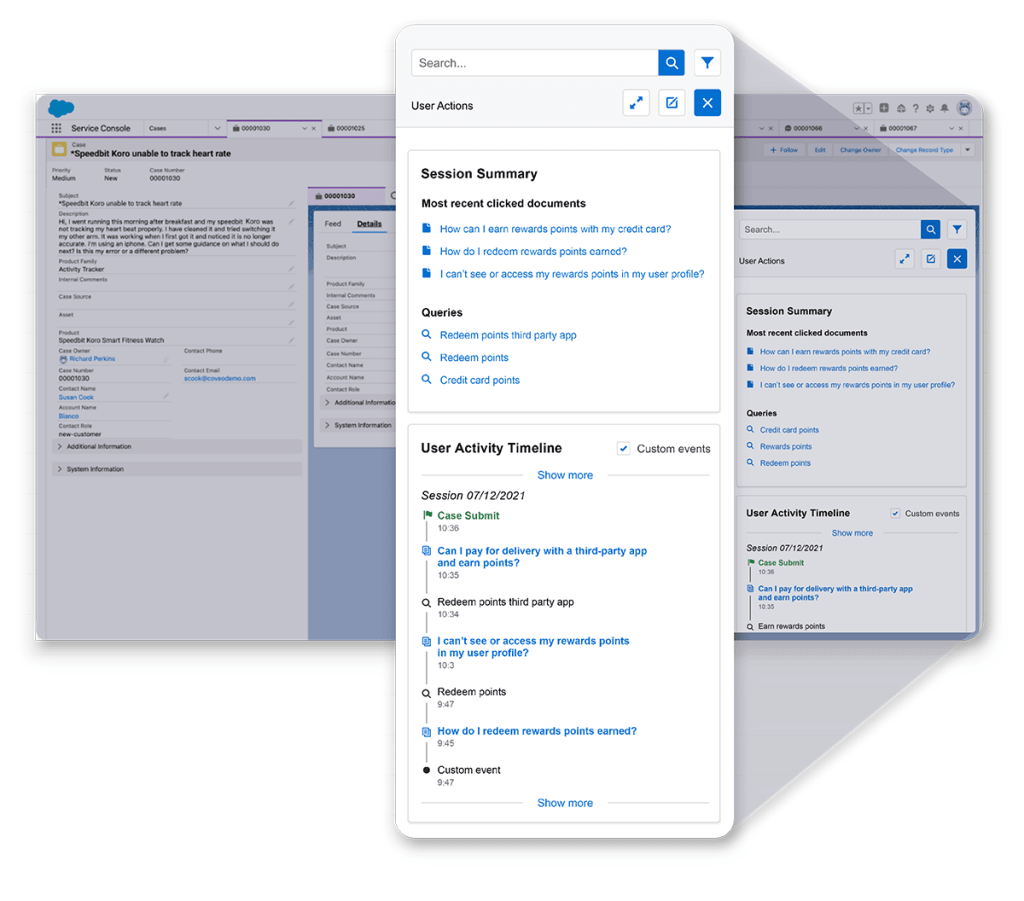
Is Your Support Experience Tailored For Your Customers?
Put yourself in your customer’s shoes. When you’re trying to get a solution from a company you’ve patronized, how would you like to be treated? The needs of customers change according to their context.
Customers will have differing support service expectations, different product knowledge and needs—they might not even use the same device to search for content! Think carefully about who your customers are and why they would need to contact you. This will help you develop and optimize the best digital customer experience for your customers.
Dig Deeper
If the ideas in this blog are a little too theoretical for your tastes, consider downloading our free ebook, 7 CX Lessons FSIs Can Steal from Other Industries. In it you’ll find straight-to-the-point details about how companies are successfully delivering relevant content to their customers through digital channels.


